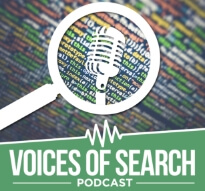Should you kill a blog because AI overviews is taking up the traffic?
- Part 1SEO Forecasting Made Simple
- Part 2Name one technology that has become useless for this AI era.
- Part 3 Should you kill a blog because AI overviews is taking up the traffic?
Show Notes
-
01:57: Background and SEO Journey
A 13-year SEO veteran discusses falling into the industry through development work and the importance of hands-on learning over theoretical courses.
-
03:22: SEO Investment vs Death
Discussion of the "SEO is dying" narrative versus actual market investment trends showing increased SEO spending over traditional media.
-
04:26: Executive Communication Strategy
Framework for communicating with executives focused on revenue impact rather than vanity metrics like traffic and impressions.
-
06:57: Forecasting in Changing Times
Challenges of forecasting when historical data becomes unreliable and the importance of transparent communication about changing metrics.
-
08:29: First Party Data Reliance
Strategy for using internal business systems like HubSpot and Salesforce for accurate measurement as third-party tracking degrades.
-
09:39: Balancing AI Hype with Fundamentals
Approach to managing executive expectations around AI traffic while maintaining focus on proven SEO fundamentals.
-
10:36: AI Reporting Reality Check
Education on the limitations of current AI reporting tools and the speculative nature of LLM traffic measurement.
-
13:46: Team and Client AI Implementation
Dual approach to AI utilization covering both client optimization strategies and internal workflow improvements.
-
14:28: Custom AI Agent Development
Framework for building client-specific AI tools with detailed training data including voice, demographics, and restrictions.
-
16:22: Quality Control in AI Outputs
Systems for ensuring AI-generated content meets quality standards through human validation and expert review processes.
-
18:48: Organizational AI Education Strategy
Three-tier approach to AI education covering internal teams, partner agencies, and client education with appropriate guardrails.
-
22:41: Measuring AI Discovery Impact
Methods for tracking visibility and competitive performance in AI-driven search results using tools like SEO Monitor.
-
- Part 1SEO Forecasting Made Simple
- Part 2Name one technology that has become useless for this AI era.
- Part 3 Should you kill a blog because AI overviews is taking up the traffic?
Up Next:
-
Part 1SEO Forecasting Made Simple
80% of consumers now rely on zero-click results, reducing organic traffic by 15-25% even when visibility increases. Lindsie Nelson, VP of SEO at Symphonic Digital, manages SEO strategy for an agency overseeing $70 million in media spend across 300 enterprise clients with complex B2B sales cycles. Nelson shares her framework for communicating SEO value through revenue attribution rather than vanity metrics, implementing custom LLM agents for competitive analysis and localization, and measuring success through competitor visibility tracking when traditional traffic metrics no longer reflect true performance.
Play Podcast -
Part 2Name one technology that has become useless for this AI era.
80% of consumers now rely on zero-click results, reducing organic web traffic by 15-25%. Lindsay Nelson, VP of SEO at Symphonic Digital, manages performance strategies across 300 enterprise clients while navigating complex B2B attribution challenges in an era where traditional SEO metrics no longer correlate with business outcomes. She presents frameworks for measuring ROI through first-party data integration, forecasting methodologies that prioritize revenue attribution over vanity metrics, and strategic approaches to AI tool implementation that maintain quality through human-in-the-loop validation processes.
Play Podcast -
Part 3Should you kill a blog because AI overviews is taking up the traffic?
80% of consumers now rely on zero-click results, reducing organic traffic by 25% despite maintained visibility. Lindsie Nelson, VP of SEO at Symphonic Digital, manages SEO strategy for an agency overseeing $70 million in media spend across 300 enterprise clients, demonstrating measurable ROI growth even as traditional metrics decline. She presents frameworks for transitioning from impression-based forecasting to first-party revenue attribution, implementing custom AI agents for competitive analysis while maintaining human validation protocols, and establishing executive communication strategies that prioritize business impact over vanity metrics.








